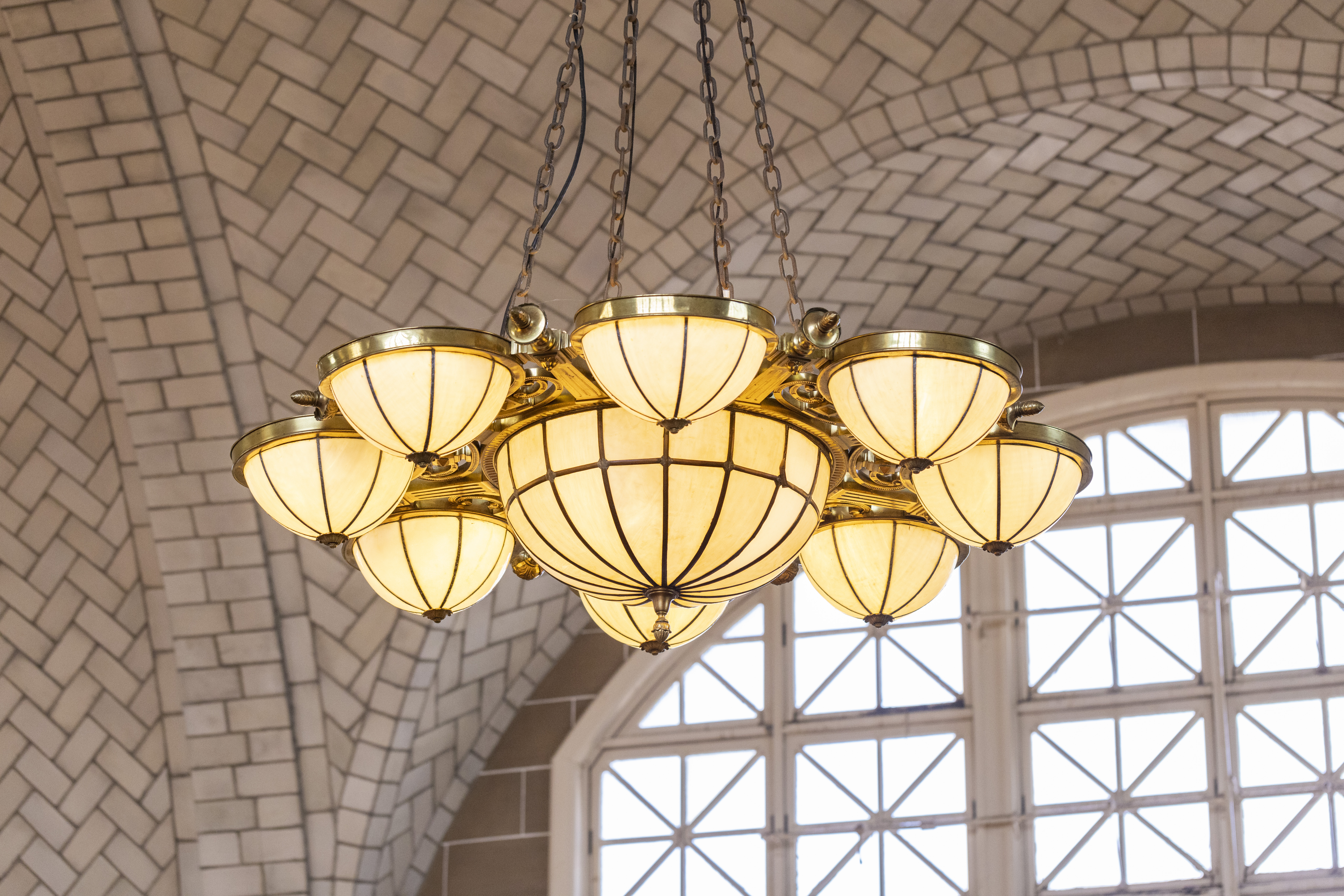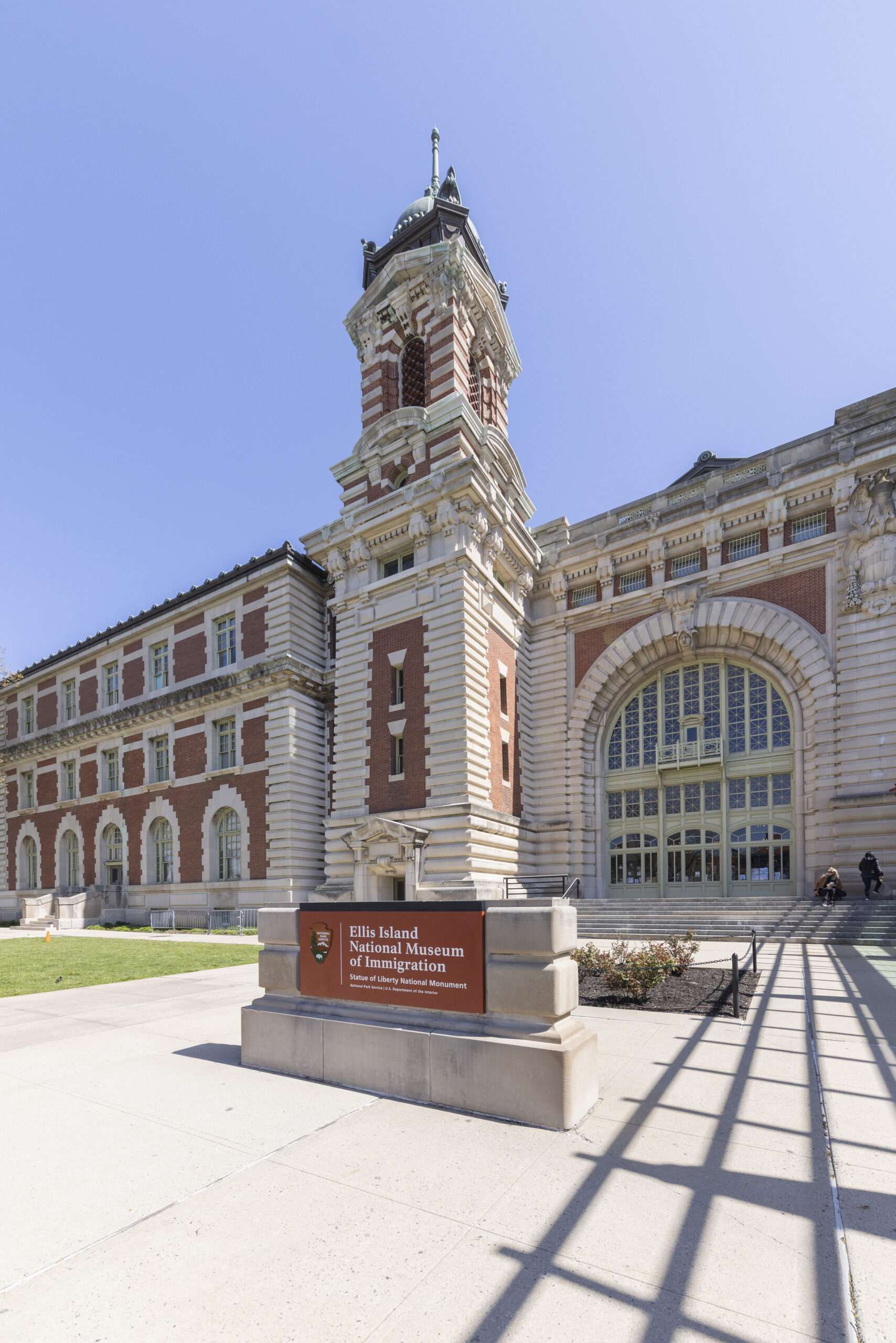Ellis Island, a federally owned island nestled in the heart of New York Harbor, stands as a monumental testament to the United States’ rich tapestry of immigration. From 1892 to 1954, this island served as the nation’s primary gateway for immigrants, witnessing the arrival of nearly 12 million individuals filled with hope and dreams of a better life. Their footsteps, echoing through the halls, tell tales of perseverance, determination, and the pursuit of the American dream. Today, Ellis Island is not merely a symbol of this dream but also a beacon of architectural significance. Its buildings, steeped in history, showcase the grandeur of the Renaissance Revival style, reflecting the era’s artistic and cultural renaissance. This blend of history and architecture makes Ellis Island a pivotal landmark, capturing the essence of America’s immigrant heritage and architectural prowess.
The historical significance of Ellis Island
Ellis Island has been a significant landmark for over a century. Between 1892 and 1954, it was the primary gateway for immigrants entering the United States. Nearly 12 million immigrants passed through its doors, seeking a better life and contributing to the diverse tapestry of American culture. The island’s strategic location in Upper New York Bay, positioned between New Jersey and New York, made it an ideal location for this purpose.
Architectural marvels: The buildings of Ellis Island
The main building of Ellis Island, constructed in 1900, is a prime example of the Renaissance Revival architectural style. Designed by the renowned architects William Alciphron Boring and Edward Lippincott Tilton, the building showcases intricate designs and craftsmanship. The island also houses other significant structures, including a hospital built in 1911, all reflecting the architectural trends of their respective times.
The role of photography in documenting Ellis Island’s legacy
Photography has played a pivotal role in capturing the essence of Ellis Island. From black and white images of arriving immigrants to detailed shots of the island’s architectural nuances, photographers have immortalized the island’s history. For enthusiasts of both architecture and photography, Ellis Island offers a plethora of opportunities to capture the interplay of light, shadow, and structure.
The evolution of Ellis Island’s architecture
Over the years, Ellis Island underwent several modifications. The initial wooden structures, unfortunately, succumbed to a fire in 1897. However, this tragedy paved the way for the construction of more resilient, fireproof buildings. The subsequent structures, made predominantly of Georgia Pine, were not only functional but also aesthetically pleasing, blending seamlessly with the island’s natural beauty.
Ellis Island in modern times
Today, Ellis Island is part of the Statue of Liberty National Monument and is accessible to the public only by ferry. The north side houses the main building, now transformed into a national museum of immigration. The south side, home to the Ellis Island Immigrant Hospital, offers guided tours, allowing visitors to delve deep into the island’s past.
The architectural styles of Ellis Island
Ellis Island’s architectural journey is a fascinating blend of necessity and artistry. The Renaissance Revival style, characterized by its symmetrical facades, arched windows, and classical details, is prominently displayed in the main building. This style, popular in the late 19th and early 20th centuries, was influenced by the architecture of the Italian Renaissance, making it a fitting choice for a place that welcomed so many from Europe.
The island’s structures, while functional, were designed with an eye for aesthetics. The red brick facade, terracotta tiles, and ornate detailing of the main building are a testament to this. The hospital complex, though built for practical purposes, also showcases architectural finesse with its dormer windows, gabled roofs, and intricate brickwork.
Capturing Ellis Island through the lens
For photographers, Ellis Island is a treasure trove of opportunities. The interplay of natural light with the island’s structures creates a dynamic environment for capturing stunning images.
The detailed facades, with their intricate patterns and designs, provide a rich texture that contrasts beautifully with the vast expanse of the surrounding waters.
Photographers have also been instrumental in documenting the human side of Ellis Island. Candid shots of immigrants, with hope and trepidation evident in their eyes, tell a poignant story.
These images, juxtaposed against the grandeur of the island’s buildings, create a powerful narrative of dreams, struggles, and new beginnings.
The restoration efforts
The passage of time, coupled with natural calamities, left many of Ellis Island’s structures in a state of disrepair. Recognizing the historical and architectural significance of the island, concerted efforts were made to restore it to its former glory. The main building underwent extensive renovations in the 1980s, ensuring that its architectural details were preserved while making it suitable for modern-day visitors.
The restoration process was meticulous, with architects and conservationists working hand in hand. Old photographs and blueprints were consulted to ensure accuracy in the restoration. Today, thanks to these efforts, visitors can experience the island much as it was during its heyday.
Inside the main building: A photographer’s dream
The Grand Hall of Ellis Island, often referred to as the “Heart of Ellis Island,” is a marvel for photographers. With its vast, open space, high ceilings, and arched windows, the hall offers a unique interplay of light and shadow. Photographers can capture the intricate details of the tiled floors, the wooden benches that once seated thousands of awaiting immigrants, and the majestic staircases leading to the registry room.
The inspection rooms, though smaller, tell a more intimate story. Here, medical examinations took place, determining the fate of many. The rooms, with their original medical equipment and furniture, provide a glimpse into the past, making them a focal point for photographers aiming to capture the essence of the immigrant experience.
The chandeliers of the great hall: A radiant legacy
The Great Hall of Ellis Island, renowned for its architectural splendor, is further accentuated by its magnificent chandeliers. These intricately designed fixtures not only illuminate the hall but also symbolize the hopes of the immigrants who passed through. Crafted with meticulous detail, they reflect the artistry of the early 20th century.
For photographers, the chandeliers present a captivating subject, showcasing the interplay of light, shadow, and history. Beyond aesthetics, they’ve witnessed countless immigrant stories, shining a light on their first steps in America. Today, as part of the Ellis Island National Museum of Immigration, these chandeliers continue to glow, echoing tales of hope and new beginnings.

Lesser-known architectural gems
Beyond the main building, Ellis Island boasts other architectural wonders. The hospital complex, though less frequented, is a testament to the island’s commitment to the well-being of its immigrants. The buildings, designed with functionality in mind, still showcase architectural details worth capturing. The red brick walls, the dormer windows, and the gabled roofs all add to the island’s aesthetic appeal.
The Powerhouse, responsible for the island’s electricity, is another structure of note. Its industrial design, with tall chimneys and robust construction, stands in contrast to the more delicate designs of the main buildings, offering photographers a different perspective on the island’s architectural diversity.
The stories behind the walls
Ellis Island is not just about architecture; it’s about the stories of the millions who passed through its doors. The “Island of Hope” for many, it was also the “Island of Tears” for those who were denied entry. Photographers, through their lenses, have the power to tell these stories, capturing the emotions, hopes, and dreams of those who sought a new life in America.
The tales of the workers, both government employees and detained immigrants, who kept Ellis Island running, add another layer to its rich history. Their stories, combined with the island’s architectural beauty, make it a destination of significance, not just for historians but for photographers and architecture enthusiasts alike.
The hospital complex: A blend of functionality and design
The Ellis Island Immigrant Hospital, located on the south side of the island, is an often-overlooked architectural gem. Built in 1911, this complex was one of the most advanced public health institutions of its time. Designed to treat and quarantine sick immigrants, the hospital played a crucial role in ensuring the health and safety of both newcomers and the American public.
From a photographer’s perspective, the hospital complex offers a myriad of opportunities. The long corridors, lined with rooms that once housed patients, tell tales of hope and despair. The large windows, designed to let in ample sunlight, create dramatic lighting effects, perfect for capturing the essence of the place. The exterior, with its red brick walls and white trim, stands in contrast to the lush green surroundings, making it a visually appealing subject.
The powerhouse: The unsung hero
Ensuring the smooth functioning of Ellis Island was no small feat, and the Powerhouse was central to this operation. This industrial building, with its tall chimneys and robust design, was responsible for providing electricity to the entire island. While its architectural style is starkly different from the main building, it holds its own charm. Photographers can capture the raw, industrial beauty of the Powerhouse, with its brick walls and metal fixtures, juxtaposed against the backdrop of the New York skyline.
The culinary and daily operations: Behind the scenes
Ellis Island was a bustling hub, and ensuring the well-being of its inhabitants required a well-oiled machine. The laundry and kitchen facilities played a pivotal role in this. While these might not be the first places one thinks of when considering architectural photography, they offer a unique glimpse into the daily operations of the island. The large industrial kitchen, with its stoves, ovens, and utensils, tells a story of the thousands of meals prepared daily. The laundry rooms, with their large washing machines and drying racks, speak of the efforts to maintain hygiene and cleanliness.
For a photographer, these spaces offer a chance to capture the less glamorous, yet equally important, aspects of Ellis Island. The play of light in these functional spaces, combined with the historical artifacts, can result in some truly captivating images.
Ellis Island’s decline and closure: The end of an era
As the 20th century progressed, changing immigration policies and the advent of more advanced transportation methods led to a decline in the number of immigrants passing through Ellis Island. By the 1950s, the island’s role as the primary immigration gateway had diminished. In 1954, Ellis Island officially closed its doors as an immigration processing center, marking the end of a significant chapter in American history.
The buildings, once bustling with activity, fell into disrepair. The once-majestic main building, the hospital complex, and other structures on the island bore the brunt of time and neglect. For photographers, this period offers a unique perspective, capturing the melancholy of abandoned spaces, the peeling paint, and the overgrown vegetation, all telling tales of a bygone era.
Preservation and modern day significance: A phoenix rises
Recognizing the historical and cultural significance of Ellis Island, efforts were initiated in the latter half of the 20th century to preserve and restore its structures. Spearheaded by the National Park Service, the restoration process was meticulous, aiming to retain the original architectural essence while making the buildings suitable for modern-day use.
Today, Ellis Island stands as a testament to these efforts. The main building has been transformed into the Ellis Island National Museum of Immigration, offering visitors a chance to delve deep into the immigrant experience. The hospital complex, though not fully accessible to the public, has been preserved, with guided tours providing insights into its history.
For photographers and architecture enthusiasts, the restored Ellis Island offers a blend of history and architectural beauty. The renovated structures, set against the backdrop of the New York skyline, provide countless opportunities for capturing the island’s renewed splendor.
Conclusion: Ellis Island’s lasting legacy
Ellis Island, with its rich tapestry of stories, architectural marvels, and historical significance, remains an integral part of the American narrative. Through the lens of a camera, one can appreciate its beauty, its history, and its role in shaping the nation. Whether it’s the grandeur of the main building, the industrial charm of the powerhouse, or the poignant tales of the hospital complex, Ellis Island continues to inspire and captivate, making it a must-visit for photographers, historians, and anyone interested in the American story.






